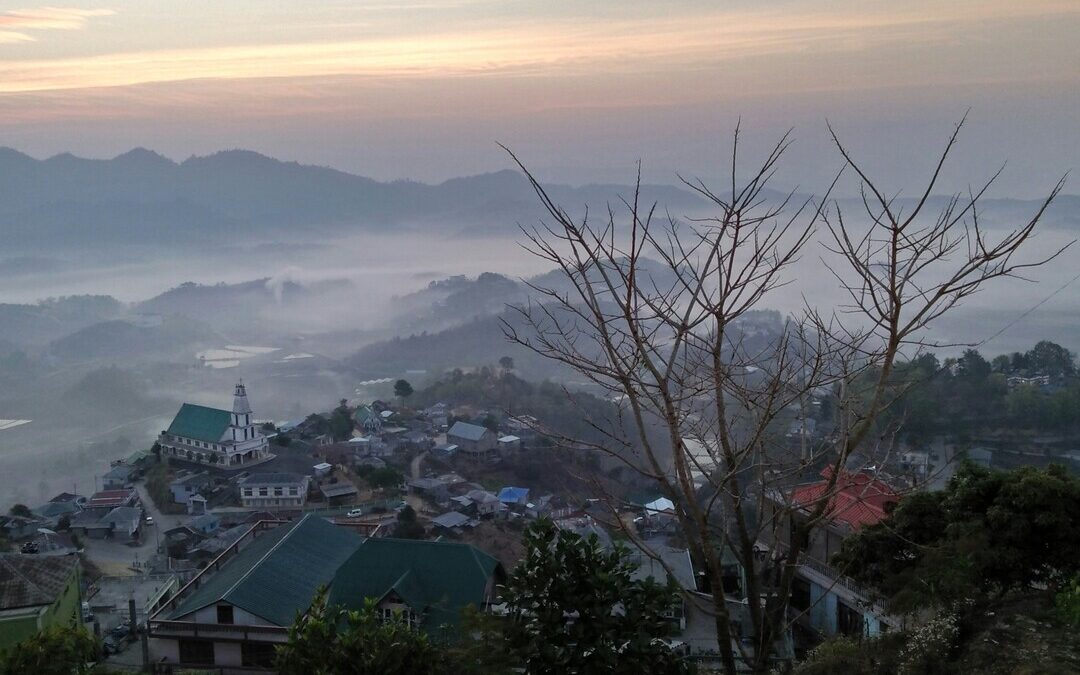NITI Aayog Report Finds 85% of Northeast Districts Now SDG Front Runners
Mizoram’s Hnahthial tops Northeast Region SDG Index 2023–24 as 85% of districts achieve ‘Front Runner’ status.
India’s Northeastern Region has shown significant progress in achieving the United Nations Sustainable Development Goals, with 85 percent of assessed districts now classified under the Front Runner category, reported the latest NER District SDG Index 2023–24.
According to the report, a Front Runner category is defined as a district with a score between 65 and 99.99 on the District SDG Index. This classification indicates that the district is performing well but has not yet reached the Achiever category, which would require a score of 100 or above.
The report further revealed that Hnahthial in Mizoram secured the highest score at 81.43, while Longding in Arunachal Pradesh registered the lowest at 58.71.
The second edition of the index, released by NITI Aayog and the Ministry of Development of North Eastern Region and developed in partnership with the United Nations Development Programme, covered 121 of 131 districts across the eight Northeastern states.
Wide Gains, Narrowing Gaps
The number of Front Runner districts surged from 62 percent in 2021–22 to 85 percent in 2023–24, indicating a broad-based improvement across key development indicators.
All districts in Mizoram, Sikkim and Tripura achieved Front Runner status. Tripura’s top-performing district, Gomati and Sikkim’s Gangtok also made it to the top 10 rankings, alongside several districts from Nagaland and Mizoram.
Sikkim displayed the narrowest performance gap between its districts at just 5.5 points, suggesting uniformly strong development, while Nagaland had the widest intra-state gap at 15.07 points.
Health, Education, Gender Equality Lead
The index evaluates performance on 15 of the 17 global goals, with SDG 14 or Life Below Water and SDG 17 or Partnerships for the Goals, excluded due to data limitations.
Key improvements were seen in:
- SDG 4 or Quality Education: Front Runner districts rose from 36 to 80.
- SDG 5 or Gender Equality: 112 districts achieved Front Runner status, up from 71.
- SDG 6 or Clean Water and Sanitation: 114 districts now Front Runners, driven by the Jal Jeevan and Swachh Bharat missions.
- SDG 8 or Decent Work and Economic Growth: 111 districts improved into the Front Runner category.
However, areas such as SDG 13 or Climate Action and SDG 10 or Reduced Inequalities remain challenging. Forty-nine districts remained in the Aspirant category for climate-related metrics, and the number of low-performing districts in SDG 10 rose from 12 to 33.
Top Districts Reflect Regional Strengths
Hnahthial, Champhai, Kolasib districts in Mizoram and Gomati, West Tripura, South Tripura in Tripura featured in the top 10. Nagaland’s Mokokchung, Kohima and Dimapur, along with Gangtok in Sikkim, rounded out the list.
District-wise performance revealed diverse strengths:
- Assam: Dibrugarh led 33 districts, with 89 percent ranking as Front Runners.
- Arunachal Pradesh: Lower Dibang Valley ranked highest, while Longding trailed.
- Manipur: Imphal West was the top performer, Pherzawl the lowest.
- Meghalaya: East Khasi Hills led; East Jaintia Hills scored lowest.
- Nagaland: Mokokchung topped the state, Zunheboto scored lowest.
State Snapshots: Uniformity in the East
Sikkim, with all six districts scoring closely, emerged as a model of balanced development. Tripura displayed a similarly narrow performance gap of just 6.5 points, highlighting the effective implementation of government schemes.
Mizoram recorded the highest regional score and showed strength in gender equality, energy access, and infrastructure.
The index utilizes 84 indicators, sourced from 41 national and 43 state data systems, reflecting the improvement in data reporting since the previous edition in 2021. It aims to foster competitive federalism, facilitate peer learning and pinpoint areas for targeted intervention.
Officials said flagship programmes like the Aspirational Districts Program, combined with local planning and stronger data ecosystems, helped catalyze progress.
Challenges Ahead
Despite gains, gaps remain in achieving equitable development and environmental sustainability. SDGs related to climate action, responsible consumption and inequality continue to lag behind.
“While we’ve seen consistent advancement in core areas like health, education, and gender, the index also signals where focused investments and strategies are still needed,” the report said.
The NER District SDG Index 2023–24 highlights both significant progress and areas of concern as India moves toward the 2030 Agenda. It will serve as a key tool for policymakers to track development, localize planning efforts and ensure no district is left behind.
Nirmal Menon
Related posts
Subscribe
Error: Contact form not found.


